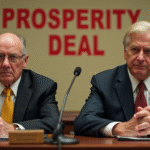Understanding the Need for Personalized Work Models
“There is no one-size-fits-all solution in designing work models because each employee is unique,” asserts Julie Gebauer, Global Head of Career, Human Capital & Benefits at WTW. She emphasizes that a common mistake in designing new work models is forcing employees to return to the office without providing genuine incentives.
The Survey Findings
According to a WTW survey, 65% of people in Latin America prefer spending more time working remotely. This reflects the realization that productivity can be maintained while working from home, a shift influenced by the pandemic.
Balancing Flexibility and Presence
While in-person interactions have their advantages, such as fostering collaboration and innovation, Gebauer points out that the return to office work hinges on providing meaningful incentives, not just mandates.
“Creating opportunities for skill development, mentorship with senior leaders, and making the work environment appealing are crucial for attracting employees back to in-person work. Intentional management is also key,” she explains.
Risks in New Work Models
Gebauer acknowledges that new work models come with risks, such as dual employment or outsourcing tasks remotely through a third party. However, she clarifies that these instances don’t necessitate a universal return to the office but underscore the importance of maintaining strong corporate cultures.
Low Employee Engagement Persists
Julie Gebauer, who authored “Closing the Engagement Gap” in 2008, notes that low employee engagement remains a challenge. Structural factors, including insufficient resources and high stress levels with inadequate well-being support, contribute to this issue.
“Engagement should encompass a fundamental understanding and connection with the company, coupled with having the necessary tools, energy, and well-being support,” she explains.
Leadership plays a crucial role in fostering a connection between employees and the organization, according to Gebauer. “Leaders must ensure employees understand and align with corporate vision, inspiring them to go the extra mile,” she adds.
Well-being Perception
WTW’s research indicates that 67% of individuals perceive a lack of physical well-being, 54% report emotional well-being deficiencies, 46% struggle financially, and 38% feel socially isolated.
Gebauer stresses that while HR programs significantly impact employee well-being, individual responsibility is equally important to create a virtuous cycle of engagement.






